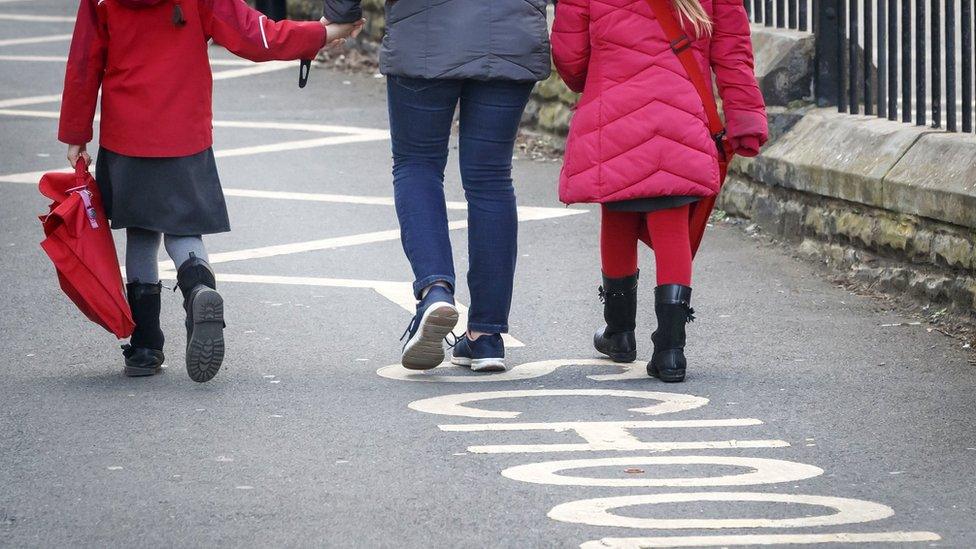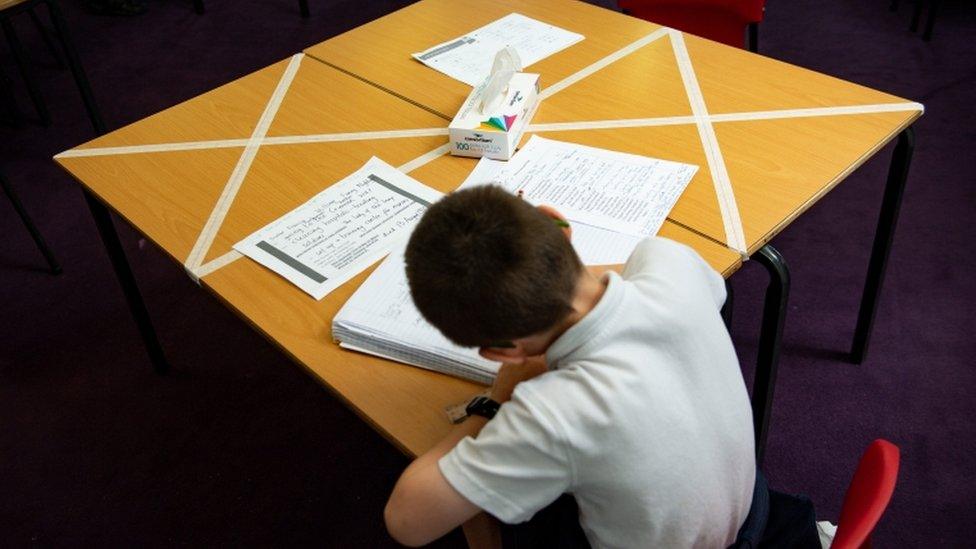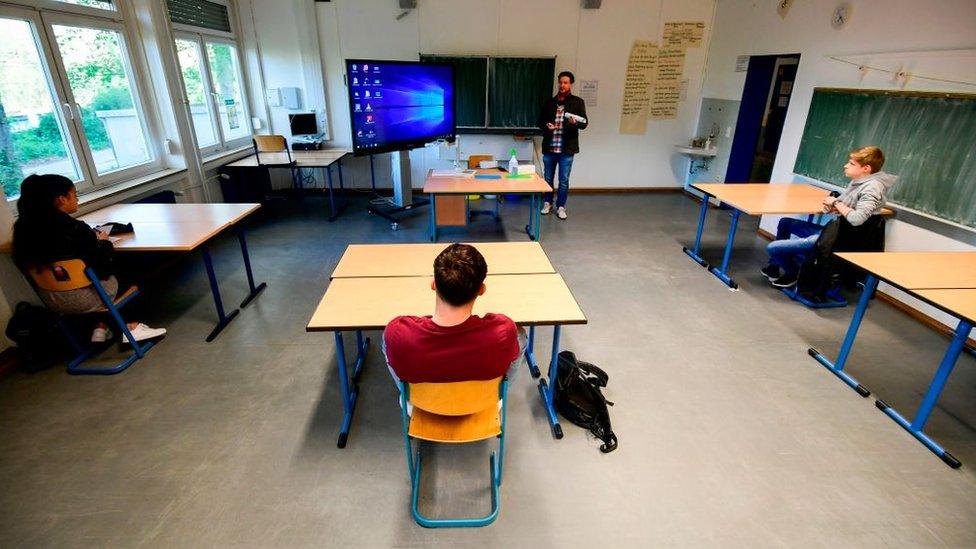Coronavirus: What will happen when Scottish schools go back in August?
- Published

Pupils will return to Scotland's schools from 11 August - but the Scottish government has stressed that classrooms will look very different from before the lockdown.
There will be smaller class sizes, physical distancing measures and a "blended" approach which means youngsters will be learning both in school and at home.
When will pupils go back to school?
The start of the new term has been set for 11 August - more than a week earlier than the summer holidays are due to end in some parts of Scotland.
The precise date that pupils will return to classrooms will be confirmed by individual councils, and it could be that some will treat 11 August as an in-service day for teachers.
Teachers and other education staff are due to return in June so they can prepare and plan for the new ways of working.
The existing hubs which were set up for vulnerable youngsters and the children of key workers are continuing to provide childcare, and will do so over the summer.
Local authorities will be able to bring some children back to school in June if it is deemed safe to do so, with a particular focus on those going into P1 and S1.
How will things be different in August?

The government admits it will not be possible to have a "one size fits all" approach across the country - or even within some council areas.
Its strategic framework for reopening schools, external says that class sizes will be significantly reduced, with most pupils spending around half their time in school and half learning at home.
Arrival and departure times will be staggered, as will break times.
Some children could attend school in the morning while others will go after lunch, or different groups of children could attend on alternate days or even alternate weeks.
One suggestion is that teachers, rather than pupils, might move around classes, and the use of one-way systems within buildings is also highlighted.
It is also possible that some former teachers could return to the classroom or help provide virtual teaching to support in-home learning.
What about social distancing?

The government's guidance to help councils plan for re-opening in August, external says the "default position" is that individuals should stay two metres apart.
It acknowledges that there may be "limited circumstances" where the two-metre rule "cannot reasonably be applied" - such as when younger primary school children are involved in play-based learning.
In these cases, there should be an "additional risk mitigation approach" which involves organising children into small groups with consistent membership.
The guidance says there may also be times when older pupils may "inadvertently" fail to stay two metres apart while doing group work in subjects like science or technology. They should also be organised into "small, consistent groups".
It is also suggests that secondary pupils should stay on the school site during lunch to "minimise unnecessary interactions with others off the school premises".
There will also be increased hand-washing or use of hand sanitisers, and enhanced cleaning.

A SIMPLE GUIDE: How do I protect myself?
TESTING: Can I get tested for coronavirus?
AVOIDING CONTACT: The rules on self-isolation and exercise
VIDEO: The 20-second hand wash

Where will pupils be taught?
It has been suggested that libraries, community halls, leisure centres, conference venues and vacant business accommodation could be used to provide additional space for teaching.
The guidance says schools may be able to create additional indoor teaching space in large dining or games halls.
It also suggests that they could use flexible accommodation like mobile classrooms and geodomes, or temporary shelters like polytunnels and canopies, to help "maximise and enhance outdoor learning opportunities".
What is blended learning?

The framework says the new system relies on there being consistent, easy-to-use materials for learning at home which would "support and complement, but not replicate, in-school learning".
It says there will be a strong focus on pupil health and wellbeing, literacy and numeracy, and that not all home learning will be IT-based.
However, there will be a specific focus on providing digital access for pupils who do not currently have it, particularly those in the senior phase of schools.
On Thursday, Education Secretary John Swinney said an initial tranche of 25,000 laptops with a free internet connection would be provided to pupils who need them.
New national digital learning resources will be provided by Education Scotland.
How will the places in schools be distributed?
The framework says decisions will need to be taken about how the finite number of places available for in-school learning each day will be distributed.
It says that providing education and childcare for the children of key workers should be a priority if they have no other way of continuing to work delivering an essential service.
The remaining places in schools should be distributed across all year groups.
Councils and schools will be able to decide on the best system for them, such as choosing between pupils attending for part of a week, or doing one week on and one week off.
They will also be able to prioritise support for groups who have the greatest need, such as those with additional support needs or pupils from disadvantaged backgrounds.


Use the form below to send us your questions and we could be in touch.
In some cases your question will be published, displaying your name, age and location as you provide it, unless you state otherwise. Your contact details will never be published. Please ensure you have read the terms and conditions.
If you are reading this page on the BBC News app, you will need to visit the mobile version of the BBC website to submit your question on this topic.